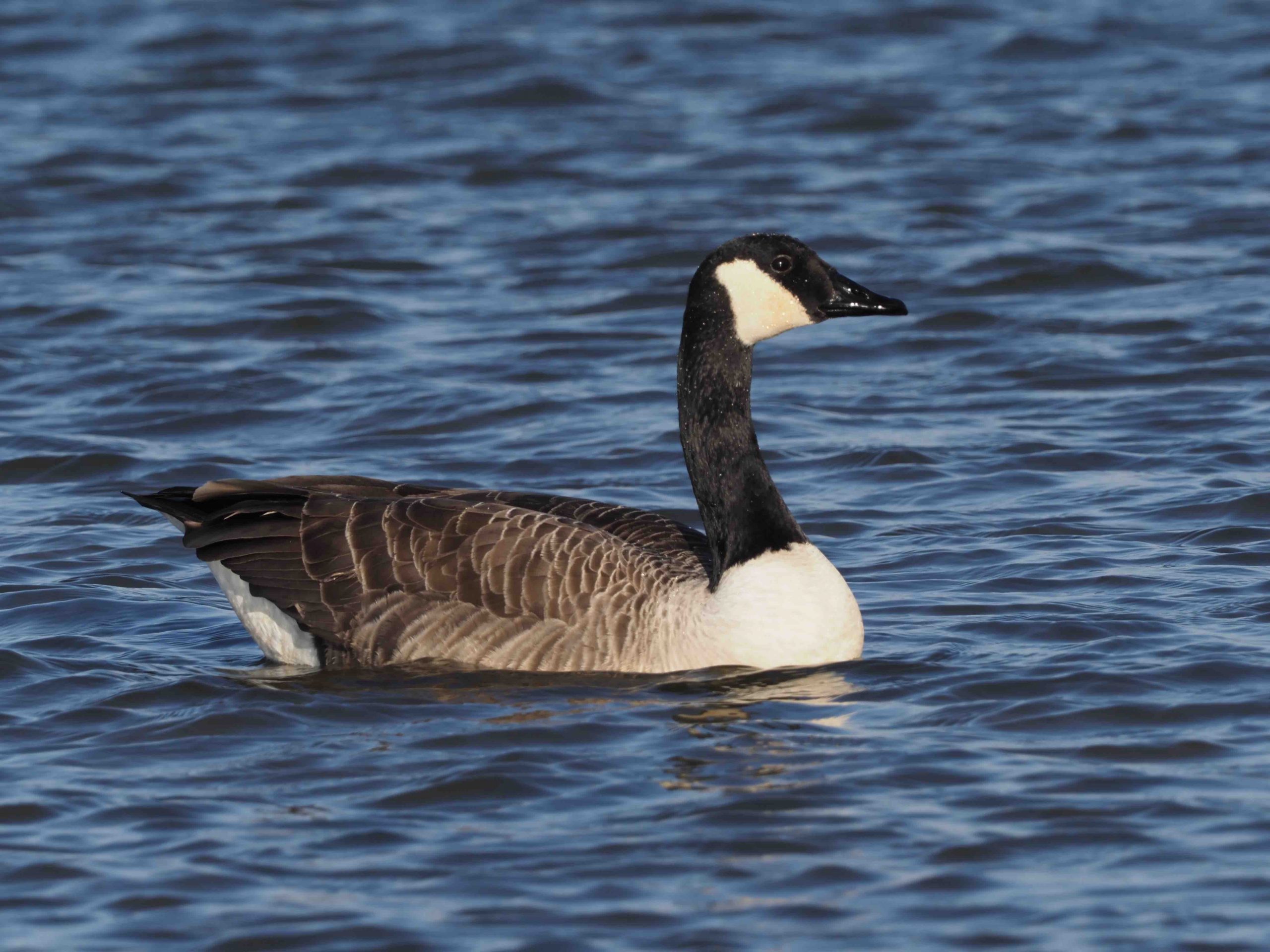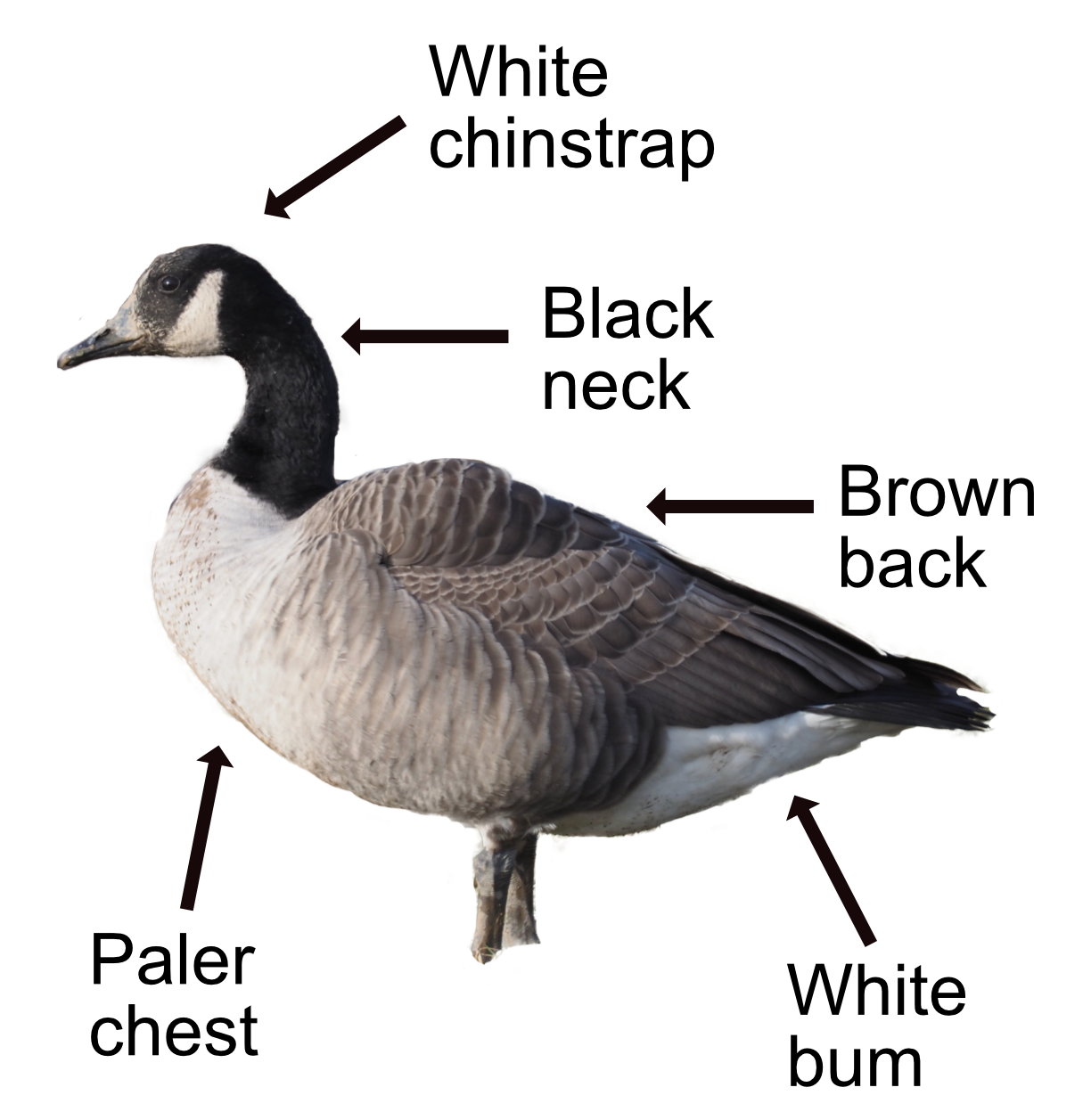
The Canada Goose was first introduced in the late 17th century as an addition to King James II's waterfowl collection in St. James's Park and also to look picturesque on the lakes of big stately homes. It can now be found widely across Britain and in some areas is considered a bit of a pest, especially when eating the golf club fairway or jamming up the air intake of a jet engine.
Canada Geese have a brown body, pale brown chest and sides, black neck and head with a broad white chinstrap, and a white bum under their tail. The bill and feet are also black. Their call is a relatively deep, loud trumpeting "mmm-ruk!".
Being primarily herbivores, they feed on plants both in the water and on land by grasping them with their bill, then tearing them up with a jerk of the head. They much prefer lawn grass in urban areas. Parks and football pitches are favourite spots provided they have wide open areas with a good view so the flock can avoid potential predators while they picnic. They will also eat fruits and seeds. At night, they roost on water or mud banks.

The Canada Goose's nest is a pile of leaves and grass built near water by the female and defended by the male. It is often on islands or under the shelter of a bush. The female lines the nest with feathers from her own body. The 5-6 eggs are laid in March and hatch after 28 days. The young goslings leave the nest pretty soon after hatching as they can walk, swim and find food almost immediately. The parents are often seen leading their goslings in a line, usually with one adult at the front, and the other bringing up the rear. Both parents feed the youngsters and mum keeps them warm at night. The goslings can fly after 40 days and the family group will stay together for their first winter. The young geese themselves won't start breeding for another two or three years.
Canada Geese moult their flight feathers all at the same time so are flightless for 3-4 weeks in June to July, often travelling north to places like the Beauly Firth in Scotland to moult before returning south in September. There are 62,000 Canada Geese in Britain. Their Latin name is 'branta canadensis' where 'branta' is a Latinised form of Old Norse 'brandgas' meaning 'burnt (black) goose' and 'canadensis' means 'from Canada'.